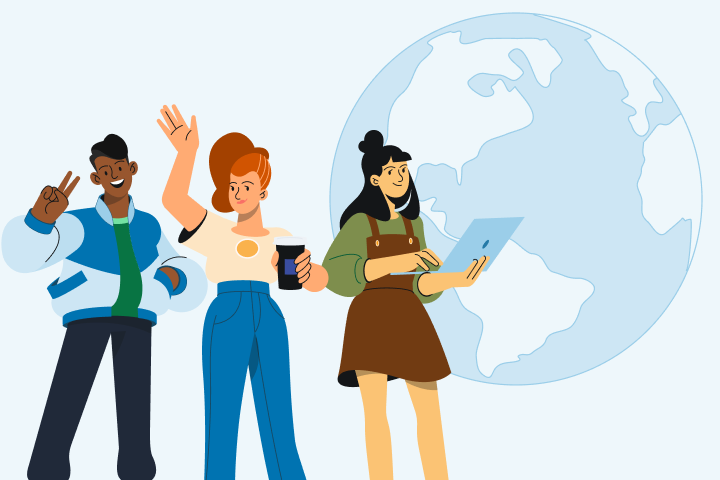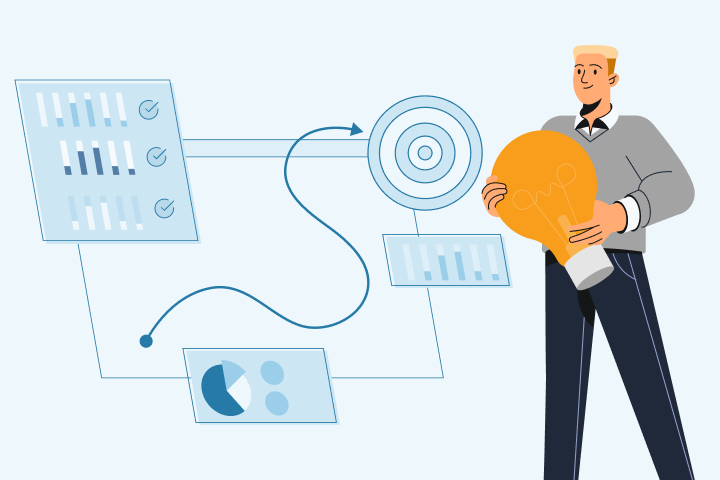The Ultimate B2B Brand Awareness Campaign Strategy
For B2B companies, brand awareness is critical. The ability to recall (and recognize) a brand is what leads customers to purchase that company’s particular products and services. Strong brand awareness will help your brand stand out from the competition, making you top of mind.
Say you’re shopping for a pair of basketball sneakers. What brand comes to mind first? For many, it’s Nike; their brand awareness has been embedded in our thoughts as the epitome of sports greatness. Of course, there are other options out there that may be just as sufficient, but your mind gravitates to those that likely have left their brand on your mind.
Just like B2C brand awareness, building brand awareness for B2B brands doesn’t happen overnight. It takes steps including honing in on your brand awareness objectives and crafting a strong brand awareness campaign.
In this article, we’ll discuss the importance of brand awareness, how to craft a brand awareness strategy, plus effective ways to increase your brand awareness.
Importance of Brand Awareness
Brand awareness is consumers’ familiarity with a company, specifically its products or services. Companies with strong brand awareness have a distinct advantage over their competitors; consumers are more likely to purchase from them because they’re familiar.
According to HubSpot, brand awareness fosters trust, creates association, and builds brand equity. Here’s how:
- Fosters Trust. Brand awareness gives your brand a personality and “a face,” which consumers gravitate towards and trust. Once consumer trust is established, your consumer bonds to your brand, making it more likely for them to repeat purchases.
- Creations Association. Brand awareness associates actions and products with particular brands. For example, when you need a quick answer, do you use a search engine, or do you Google it? That’s the power of brand awareness.
- Brand Equity. Brand awareness builds brand equity, which describes a brand’s value. A brand’s value is determined by consumers’ overall perception of the brand. Positive brand equity can enable you to expand your products or services, charge higher prices because of the higher perceived value that your brand offers, etc.
When consumers are aware of a brand, they’ll recognize it without marketing, look for it on their own to make a purchase, prefer it over similar brands, and recommend it through word-of-mouth to family and friends. This is the power of brand awareness in a nutshell.
It’s important to note that there are also different levels of brand awareness:
- Brand Awareness Quality. The types of personas who recognize your brand.
- Brand Awareness Quantity. The number of people who recognize your brand.
- Brand Awareness Depth. How well each person knows your brand, its values, and its products or services.
To achieve high levels of brand awareness in quality, quantity, and depth, you’ll want to utilize a brand awareness strategy.
Brand Awareness Strategy
The primary goal of your brand awareness marketing strategy is to increase brand reach. But, how to create brand awareness doesn’t have to be complicated. In fact, successful B2B brands know that the best brand awareness campaign strategy is to keep it simple, focusing on these five best practices:
-
Have a Strong Brand Voice. Your brand voice (e.g., serious, humorous) and design elements (e.g., brand colors) will help create a distinct brand identity. Your branding needs to be consistent across all platforms.
-
Use Relevant Social Marketing Channels. While it’s tempting to target all of the social platforms, you’ll be wasting precious time and resources. Instead, focus on the channels that are relevant to your target audience.
-
Choose a Format and Publish Consistently. Consistency will aid in making your brand more recognizable, and your audience will appreciate that you aren’t switching up content formats. This rule fits both brands and individuals building a brand. For example, Tim Davidson discusses B2B marketing on his social platforms, but while cutting fruit. It’s a bit of a schtick, but not only is his message well received, but his fruit ninja skills are consistently remembered as unique to him.
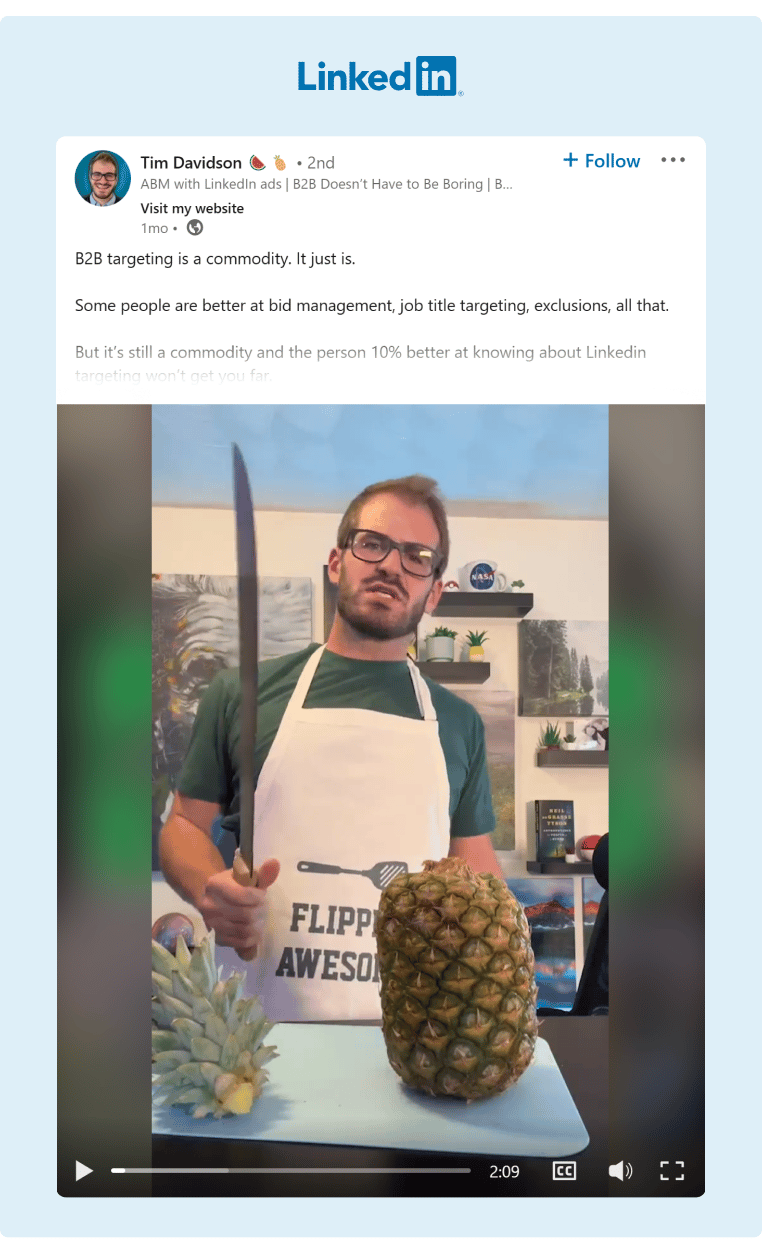 Source: Tim Davidson
Source: Tim Davidson -
Establish Measurable Goals. What goals do you want to achieve? Do you want to increase website traffic, grow your audience, or boost name search volume? These goals will later play into how to measure the success of your brand awareness campaign(s).
-
Implement Employee Advocacy. An employee advocacy platform will not only help streamline your social media marketing efforts but also boost brand awareness. Here’s how: employee engagement multiples the quantity of brand awareness for each social media post that is shared. As a result, it is an integral part of your marketing strategy for brand awareness.
In addition to these best practices, as you craft your brand awareness strategy, you want to ensure that it aligns with your B2B marketing goals and overall marketing strategies, too. A misalignment in brand messaging and content can derail your marketing efforts.
Now, let’s take a look at how to measure the effectiveness of your brand awareness strategy.
Measuring Brand Awareness
To determine the effectiveness of your brand awareness efforts, you need to know how to measure your brand awareness campaign(s). There are specific key performance indicators (KPIs) that can show you how your campaigns are performing.
Measuring brand awareness requires tracking the following key brand awareness metrics:
- Brand Impressions. This brand awareness KPI accounts for the ad spend required to achieve the KPI divided by the Cost Per Million (CPM) times 1,000.
- Click-Through Rate (CTR). Another important brand awareness measurement, CTR is the number of clicks a piece of content receives divided by the number of impressions, times 100.
- Social Media Engagement. To measure brand awareness on social media, you need to track reach, likes, shares, follows, comments, and hashtag use. Most social media platforms offer built-in analytics tools to measure these brand impressions.
Regularly reviewing your brand awareness KPIs will help you stay on top of any potential problems, so you can address them. For example, if you’re noticing a decrease in impressions, there are some ways you can increase brand awareness.
Increasing Brand Awareness
Once you have a benchmark for how your brand awareness campaign is performing, the next step is increasing brand awareness. To help you amplify your brand’s reach, first, we’ll look at how to increase brand awareness followed by some brand awareness campaign ideas and examples.
5 Ways of Increasing Brand Awareness
Here are five ideas on how to increase brand awareness on social media:
-
Content Marketing. Create valuable, engaging content that appeals to your audience. Content can include industry news, pain points, and interests. It can also include experiments you’ve run, outcomes you’ve seen, or even ‘hot takes’ on a perspective or trend in your industry.
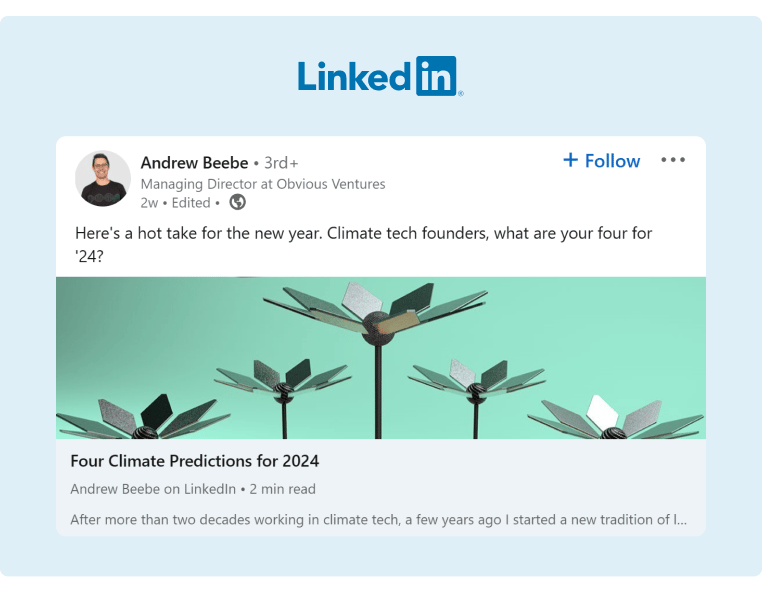 Source: Andrew Beebe
Source: Andrew Beebe -
Influencer Partnerships. Partner with influencers who make sense for your brand; they can help your brand reach by opening the door to a broader audience.
-
Engage on Social Media. Take time to interact with your audience on social media. Don’t just post an article and move onto the next thing.
-
Referral Programs. Encourage your current customers to refer your brand to others. Word-of-mouth advertising is a powerful (and trusted) form of advertising.
-
Event Participation. Host real-time workshops, events, or trade shows where your brand can interact directly with your audience.
Brand Awareness Campaign Ideas
Now that you know five ways to increase your brand awareness, it’s time to start generating brand awareness campaign ideas. Here are a few B2B brand awareness campaign examples:
1. HubSpot “Make My Persona”
There’s no better way to boost engagement than with interactive content. HubSpot’s B2B marketing campaign “Make My Persona” helps users create a buyer persona simply by answering a questionnaire. The marketing campaign generated 382,000 leads!
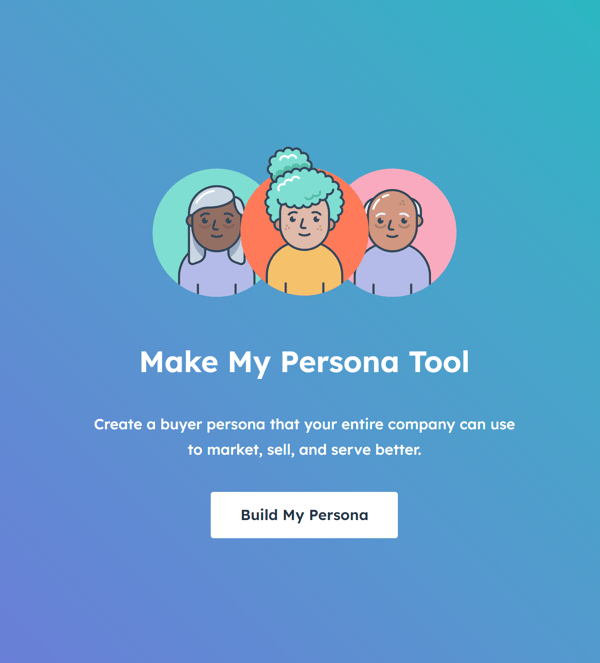
Source: HubSpot
2. Coca-Cola “Share a Coke”
Encourage customers to create content around your brand. For example, you can have your audience share a video of themselves using your products with a specific hashtag.
Coca-Cola is an expert at creating brand awareness, and one of its most successful brand awareness campaigns was its “Share a Coke” campaign with the hashtag #ShareaCoke.
Source: Coca-Cola
3. Canva “Canva Events”
Canva Events is a series of webinars, workshops, and Q&A sessions that show users how to create graphic and video content using the design tool Canva. All events are free and they even have a Canva for Teams Workshop for groups of people using their tools.
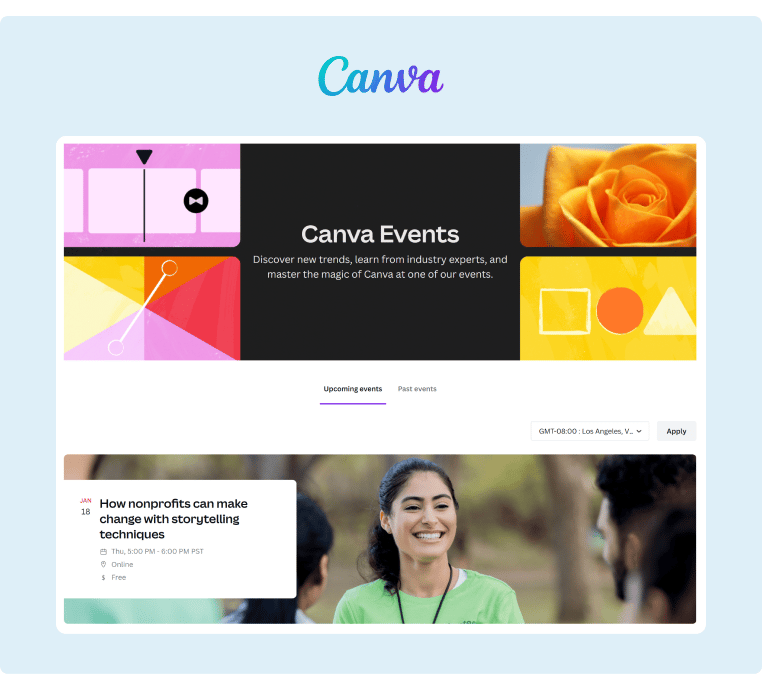
Source: Canva
4. Shopify “Let’s Make You a Business”
Shopify, an e-commerce platform, ran its first branding campaign in 2019 called “Let’s Make You a Business.” It had incredible brand awareness, appearing on social media, TV, and even billboards, proving that depending on your audience, a mixture of traditional and digital advertising can be advantageous.
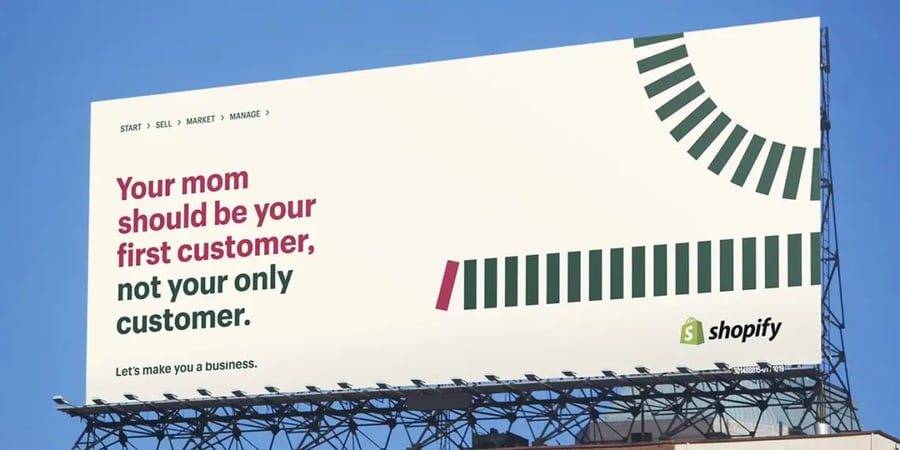
Source: Adweek
Ready To Increase Your Brand Awareness?
Having a brand awareness strategy along with knowing how to measure and increase brand awareness is only half the battle. To truly elevate your brand awareness, you also need an employee advocacy platform.
GaggleAMP can help your brand easily track awareness metrics to see how well your employees are engaging with customers. Our platform makes it easy for brands to align employee messaging and increase engagement, which boosts awareness.
Ready to learn more? Reach out to GaggleAMP today and schedule a demo.





